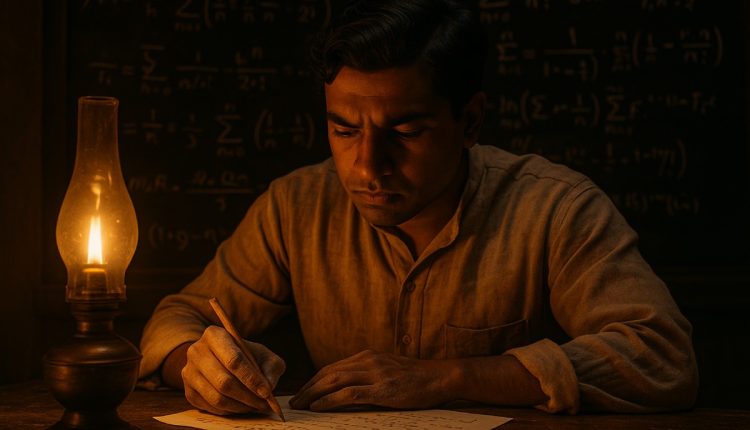In a world where education is considered a prerequisite for brilliance, Srinivasa Ramanujan defied every rule. With no formal training in pure mathematics, this Indian prodigy emerged from humble beginnings to leave a legacy that continues to shape mathematics a century later. His story is not just about numbers—it’s about raw genius, intuition, and unshakable faith in knowledge.
Humble Beginnings in Tamil Nadu
Born on December 22, 1887, in Erode, and raised in Kumbakonam, Tamil Nadu, Ramanujan showed a flair for mathematics at a very young age. By 12, he had already mastered advanced trigonometry and devised original theorems. His turning point came with a copy of G.S. Carr’s book, A Synopsis of Elementary Results in Pure and Applied Mathematics.
-
His early years were riddled with poverty, health issues, and academic challenges—he failed most other subjects in school, making it difficult to pursue a degree.
A Letter That Changed History
In 1913, Ramanujan wrote a now-legendary letter to G.H. Hardy, a renowned mathematician at Cambridge University. Enclosed in the letter were dozens of original formulas, which Hardy later admitted “could only be written by a mathematician of the highest class.”
Hardy invited Ramanujan to Trinity College, where a remarkable collaboration began—despite war, culture shock, and Ramanujan’s declining health.
Revolutionary Contributions to Mathematics
Though he lived only 32 years, Ramanujan contributed nearly 3,900 results—many of which are foundational even today. Some of his groundbreaking contributions include:
1. Number Theory
-
Partition functions, Ramanujan primes, and tau functions.
-
Remarkable congruences that still baffle and inspire mathematicians.
2. Infinite Series and Pi
-
He derived rapidly converging series for π, used even in modern computing.
3. Modular Forms & Mock Theta Functions
-
Pioneered an area that would later influence string theory and modular forms.
4. Ramanujan’s Notebook
-
His notebooks—filled with mystifying theorems without proofs—continue to be analyzed by researchers.
The Famous 1729 Anecdote
Hardy once visited Ramanujan in a hospital and said, “I came in a taxi numbered 1729. It seemed dull.”
Ramanujan instantly replied:
“It is not dull at all. It is the smallest number expressible as the sum of two cubes in two different ways:
1729 = 10³ + 9³ = 12³ + 1³.”
Tragic End, Eternal Legacy
In 1919, Ramanujan returned to India due to ill health and passed away in 1920 at just 32 years old. Despite his short life, he left behind a timeless legacy that echoes through generations of mathematicians.
Legacy and Honors
-
National Mathematics Day in India is celebrated on December 22, his birthday.
-
The Ramanujan Journal publishes research inspired by his work.
-
Films & Books: The Man Who Knew Infinity (2015) brought his story to global audiences.
-
Institutions: Ramanujan Institute (University of Madras), IIT Madras Ramanujan Math Park.
Final Thoughts: Beyond Numbers
Srinivasa Ramanujan wasn’t just a mathematician—he was a phenomenon. His intuition-driven approach, coupled with spiritual conviction and mathematical creativity, remains unmatched. His life is a reminder that genius can bloom in the most unlikely of places—with no degrees, no fancy labs, just a mind determined to unravel the universe.


Comments are closed.